National
Museum of Scotland - Edinburgh
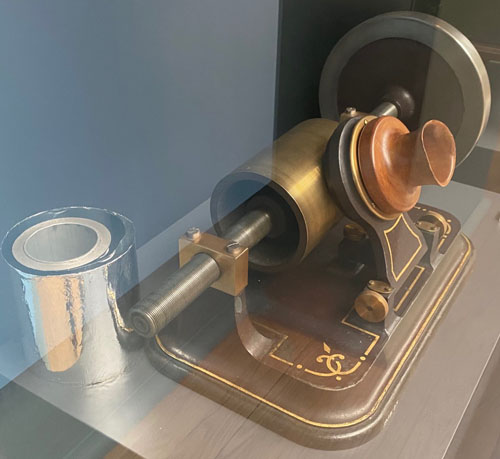
Memories
of the Phonograph
Doug Boilesen 2023
The National Museum of Scotland
in Edinburgh has amazing objects across dozens of galleries
covering centuries of Scotish history. There is no gallery dedicated
to the phonograph, however, several exhibits include phonographs
with text providing timelines and context. The following phonographs
were viewed in September 2023.
Sound and
Vision Exhibit
Three phonographs are displayed
in the "Sound and Vision" representing different periods
of phonograph entertainment with Scotish/UK connections.The
first of these three stacked phonographs is (1) the Edison foil
phonograph made by the London Stereoscopic Company, England,
c.1878. The associated text included the following:
"The first phonographs
worked on the same principle as later gramophones and record
players, with a needle following a patterned groove. These
early machines used a drum with foil, and later with wax or
celluloid plastic cylinders." An overview regarding
Edison's foil phonograph provided this information: "Thomas
Edison was working on improvements to telegraph instruments
when he discovered a way of recording and reproducing his
voice onto tin foil. Alexander Graham Bell funded improvements
to the idea, turning it into a commercial success."
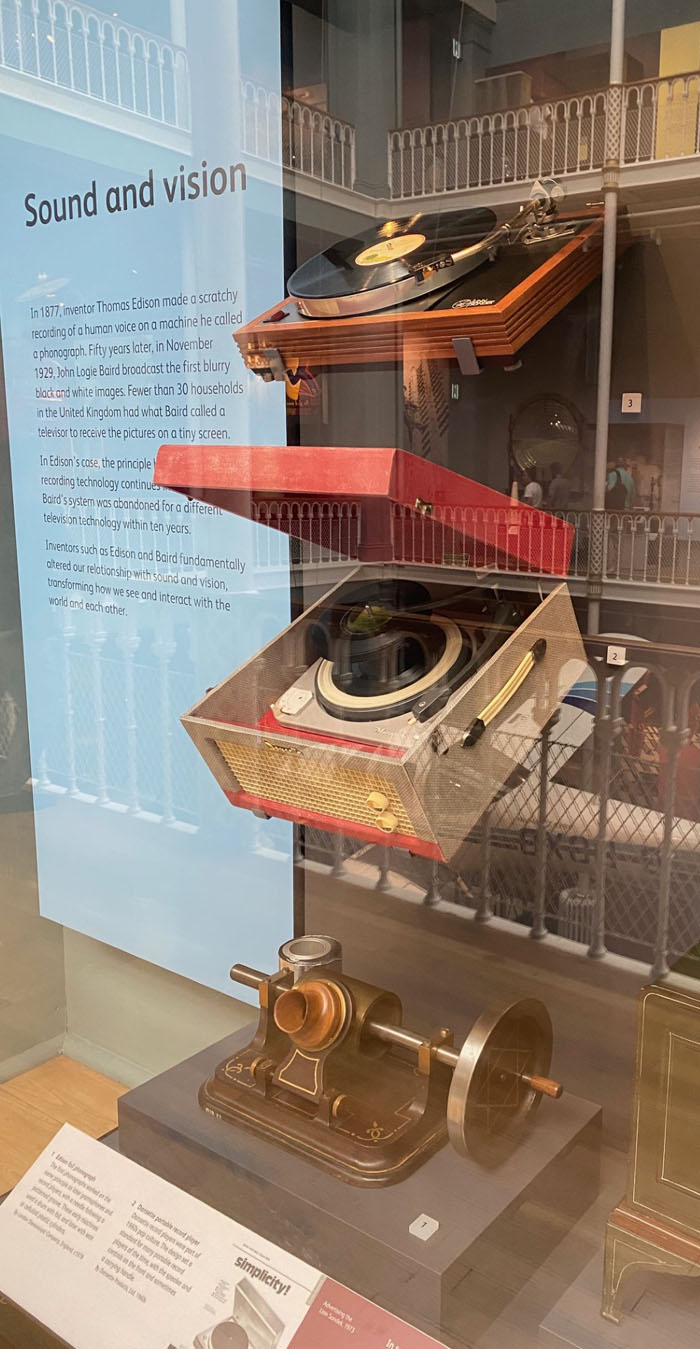
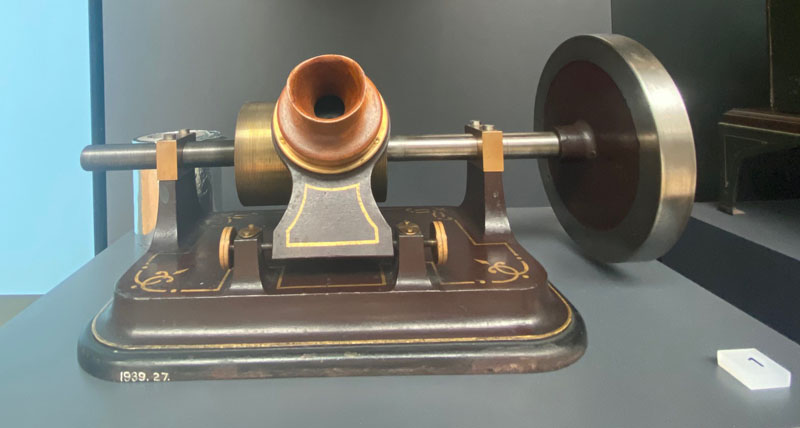
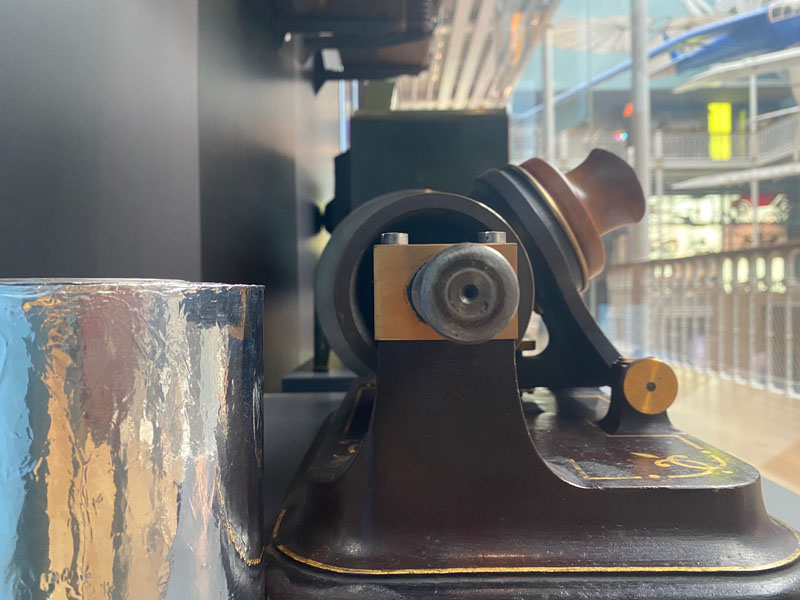
Edison foil phonograph
made by the London Stereoscopic Company, England, c.1878 with
roll of tin foil. "Edison licensed a few manufacturers to
make phonographs under his patents" one of which was "the
London Stereoscopic Society in England." (Tinfoil Phonographs
by René Rondeau, 2001, p. 81).
The record player displayed above
the tin foil phonograph is (2) the Dansette portable record
player. Dansette's were manufactured by the London firm of
J & A Margolin Ltd. with the Monarch made between
1964 and 1968.
"Dansette record players
were part of 1960s pop culture. The design set a standard
for many portable record players of the time, with the speak
and controls on the front and sometimes a carrying handle.
By Dansette Products, Ltd. 1960s."

The Monarch by
Dansette Products, Ltd. - held up to six records and drop after
the previous one finished.
The third phonograph at the top
is the Glasgow based Linn Products LP12, introduced in 1972
with its name derived from the 12" vinyl LP (long play record).
Hi-Fi Choice reviewers voted the LP12 "the most important
hi-fi component ever sold in the UK"[2]
and The Absolute Sound ranked it the second most significant
turntable of all time in 2011.[3]
- Wikipedia
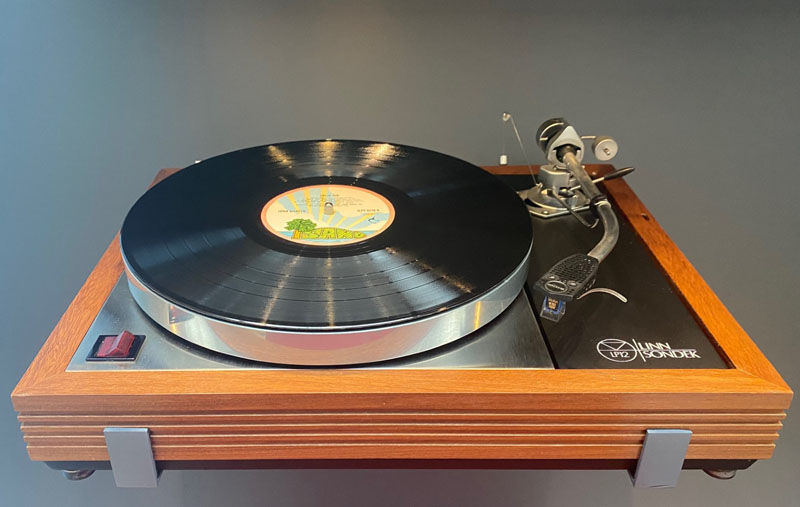
The Linn Sonder
LP12 by Linn Products Ltd., 1972 (Linn Products is Glasgow
based).
The 'vision' part of the Sound
and Vision display (not shown here) is John Logie Baird's
device which "broadcast the first blurry black and white
images" fifty years after Edison's "scratchy recording
of a human voice."
Grand Gallery
The Grand Gallery displays
more than 800 objects in their Window on the World (Level
0-5). Information about the objects is available on kiosks.
One of the exhibited objects is a Gramophone sold by E. J. Graham
Ltd., Coventry, c. 1910.
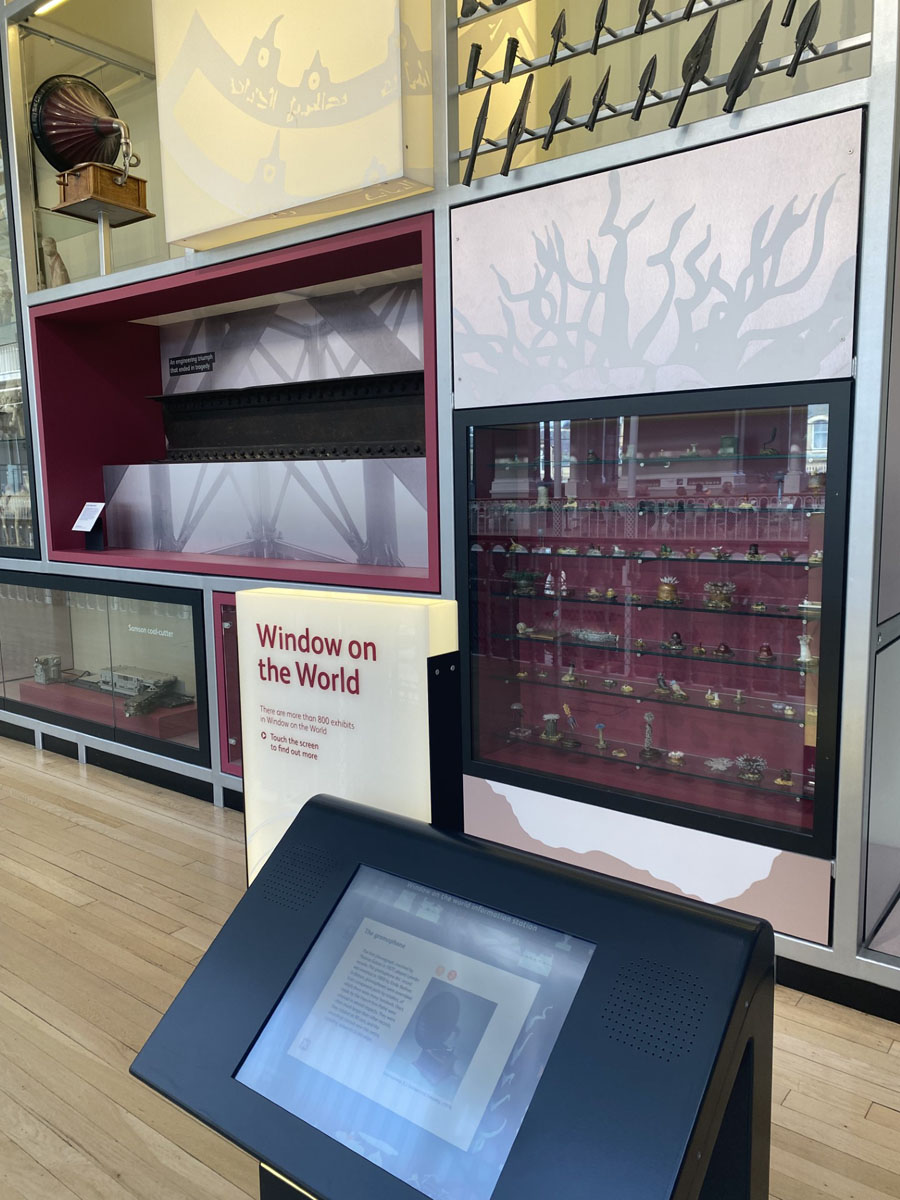
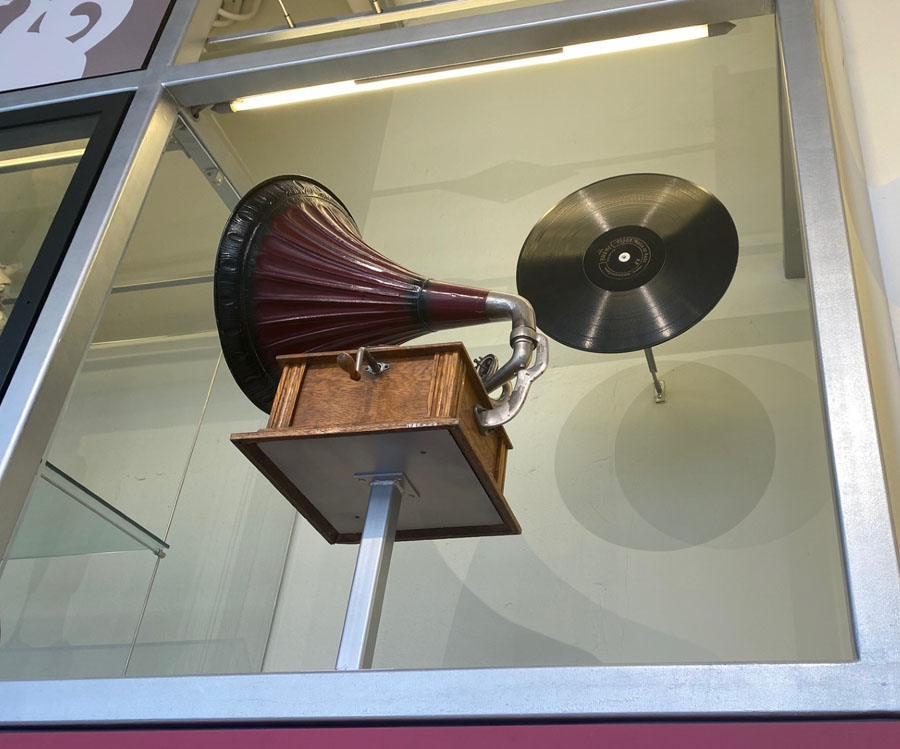
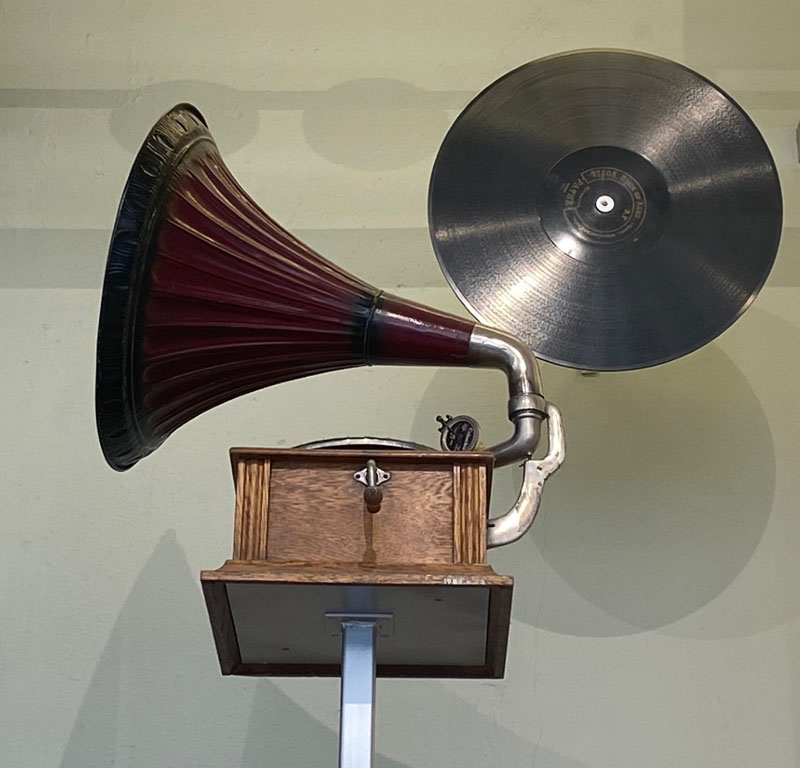
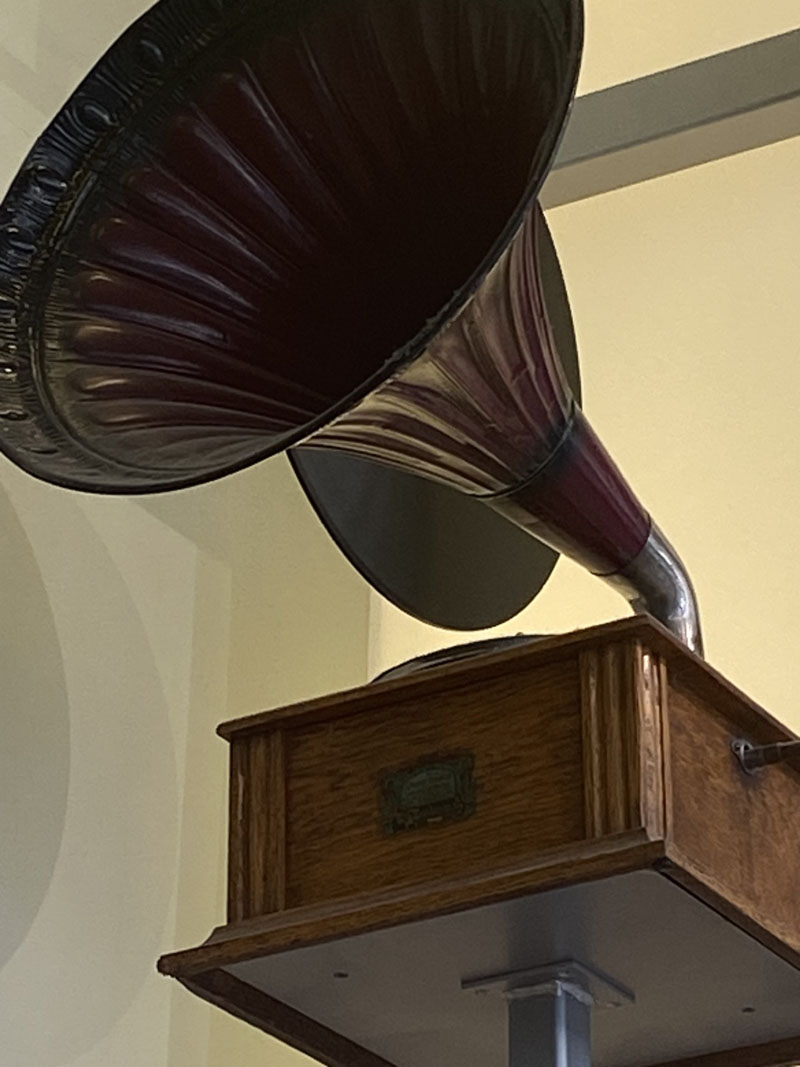
A display case in another gallery
features home decorative objects from the beginning of the 20th
century and includes two gramophones -- the Gramophone Company
Senior Monarch (1910-1912) with brass horn and the cabinet
model Bijou Grand made by the Gramophone Company, (1908-1909).
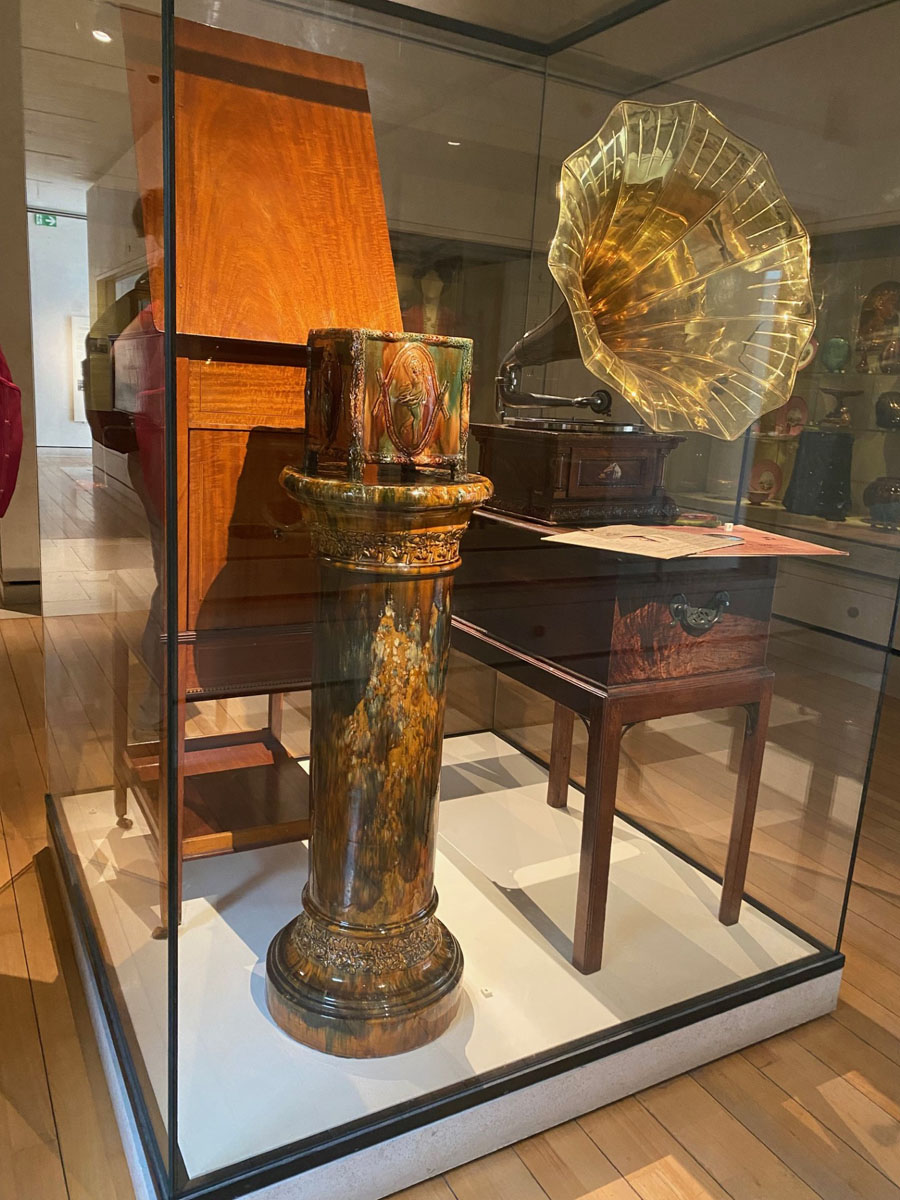
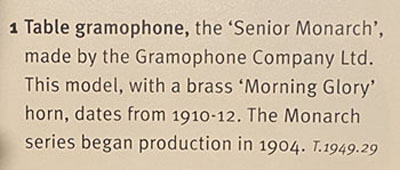
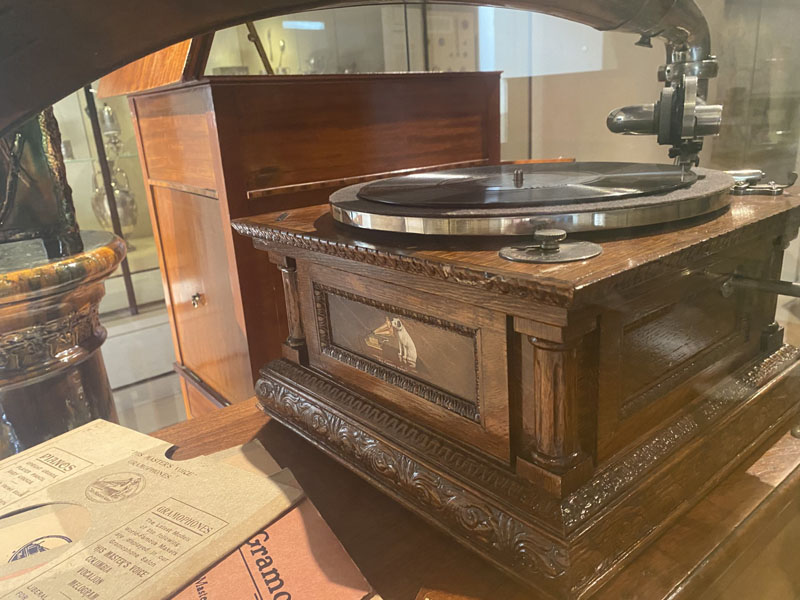
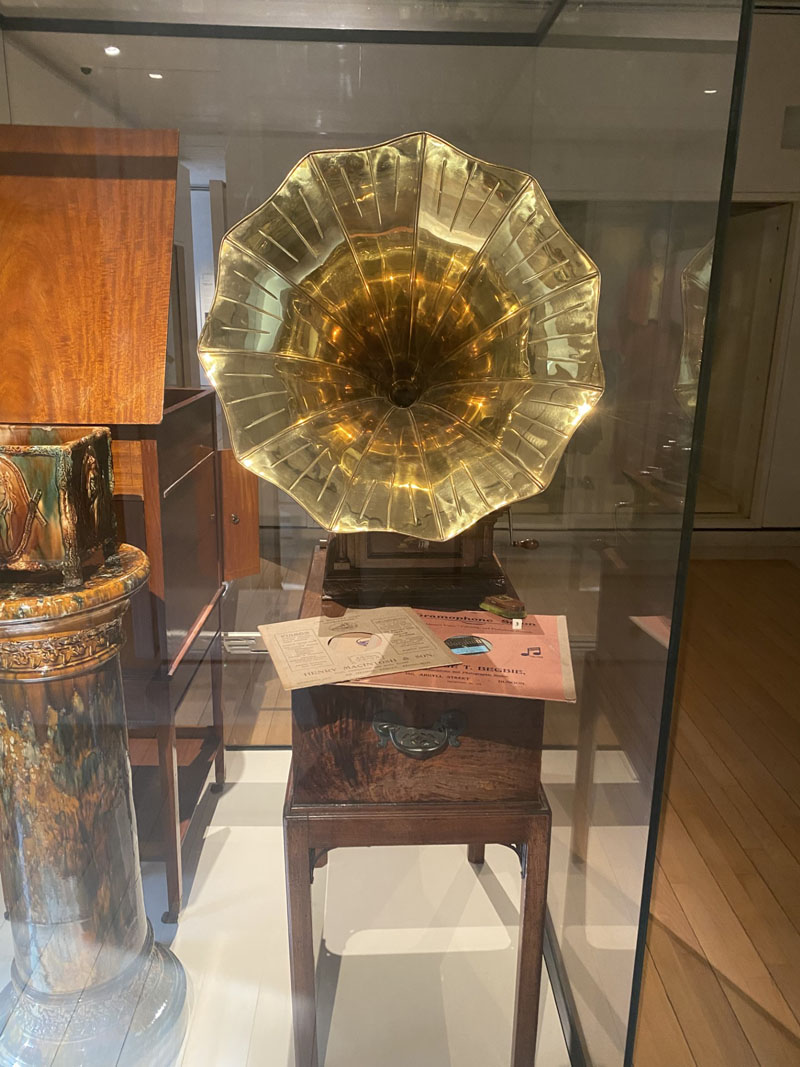
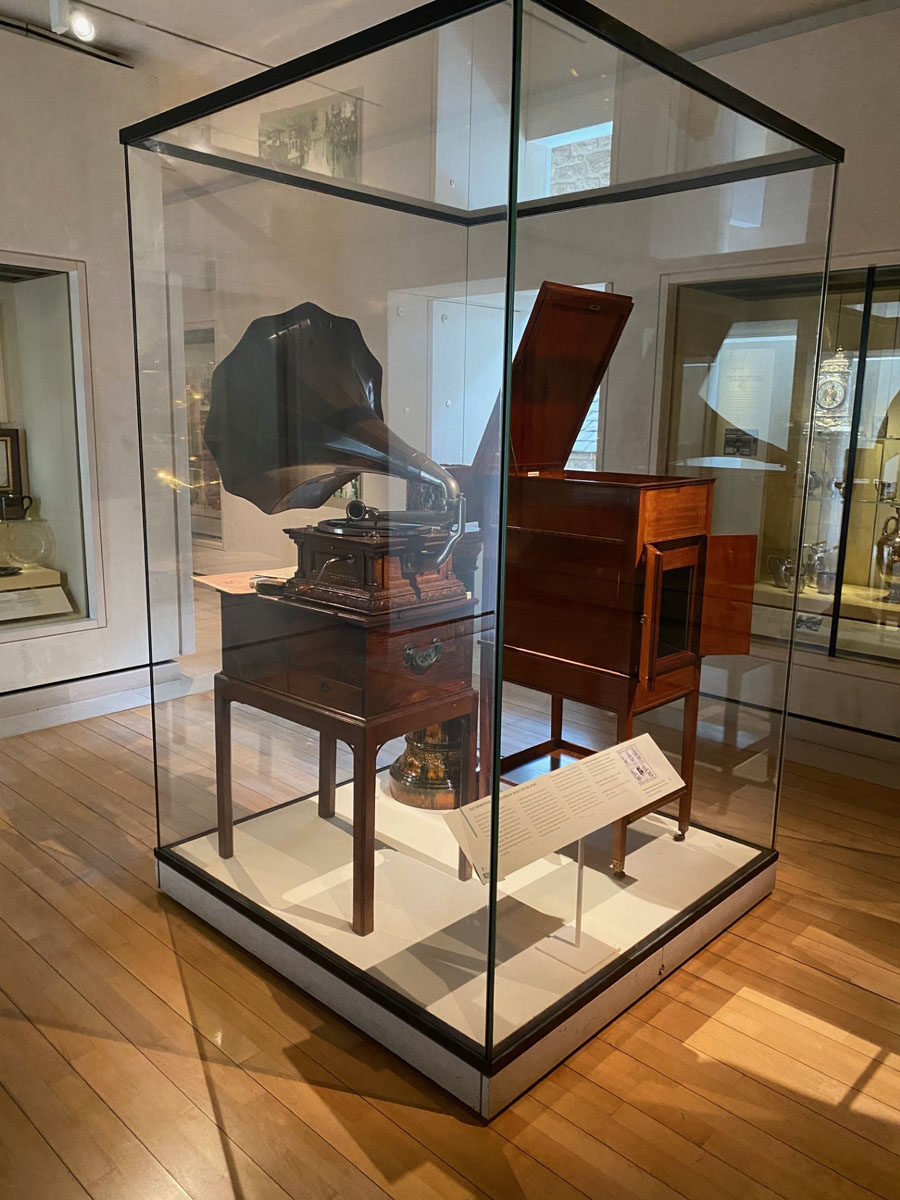
While the front 'flower' of the
Gramophone's brass horn is highly polished the outer back has
a brownish patina adding elegance for the modern eye.

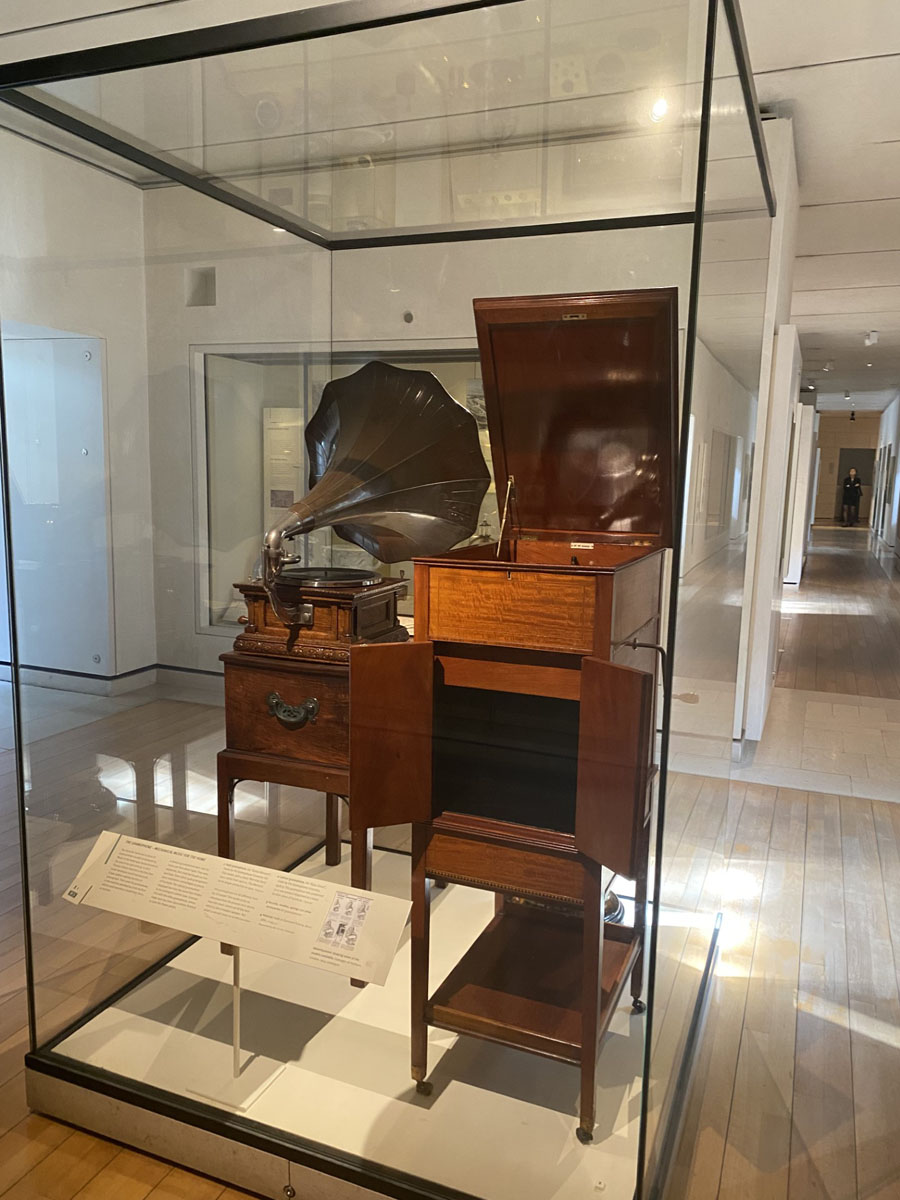
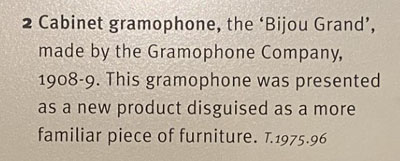
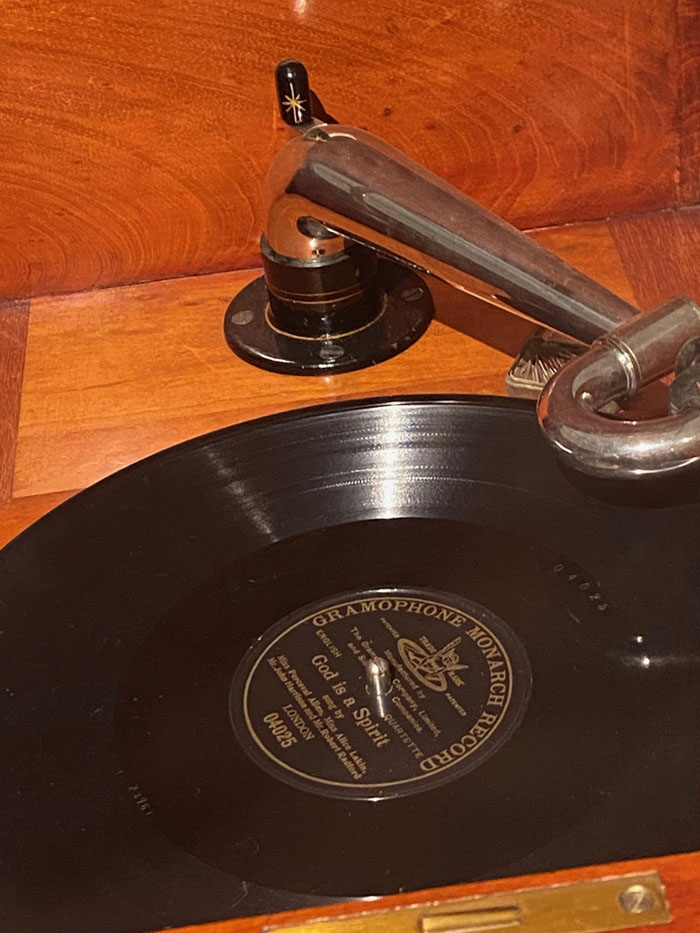
"God is a
Spirit," Gramophone Monarch Record No. 04025, London, on
the Bijou Grand's turntable.
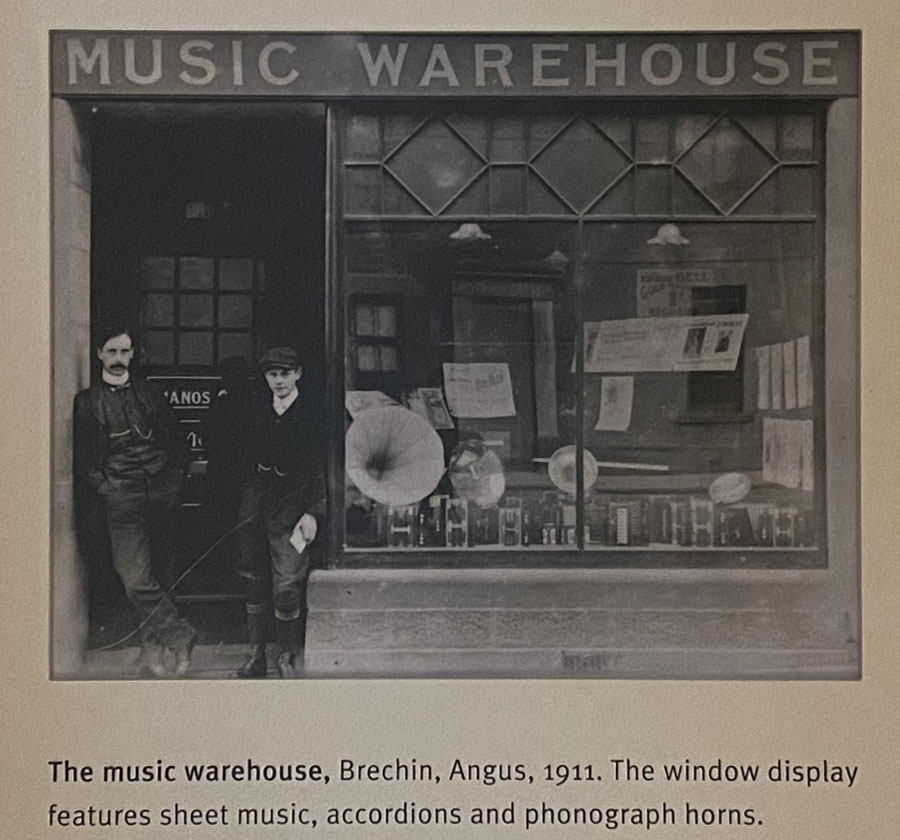
Music Warehouse,
1911 (Courtesy National Museum of Scotland).
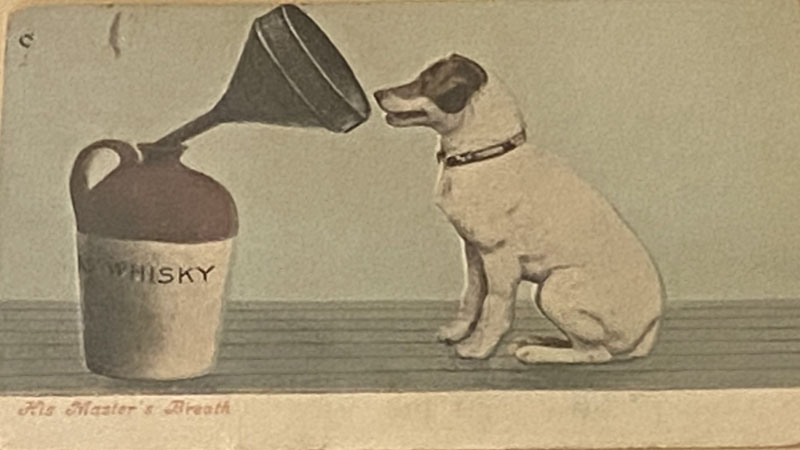
13. Humorous postcards
advertising the pleasures of Scotch whisky included Nipper
and His Master's Breath ( Courtesy of Scottish
Life Archive, Scotch Myths Collection).
Other Connections
- Television
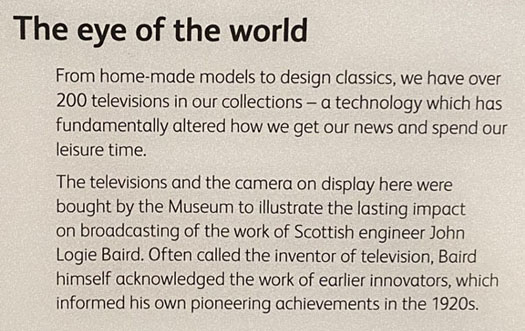
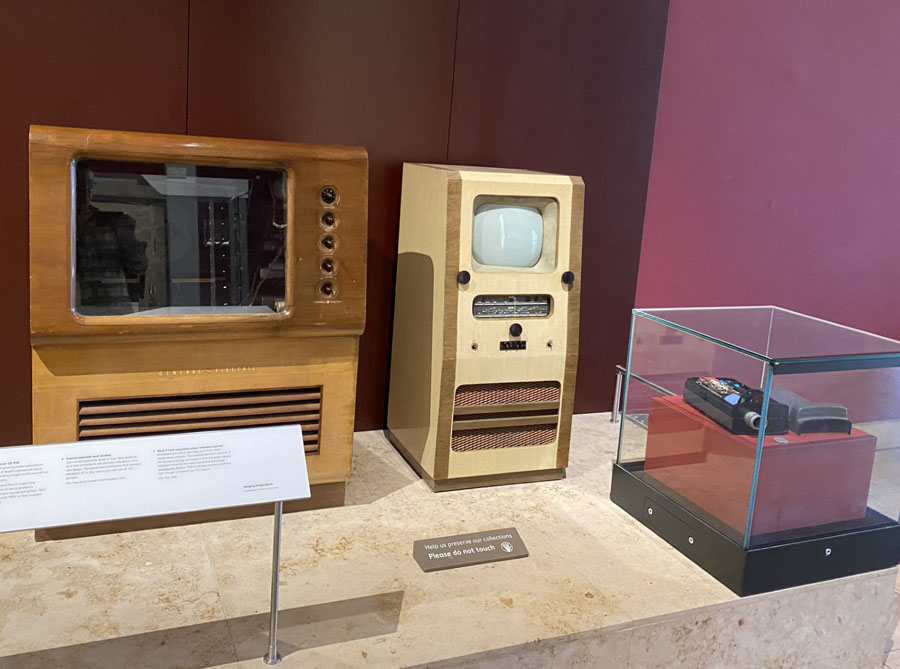
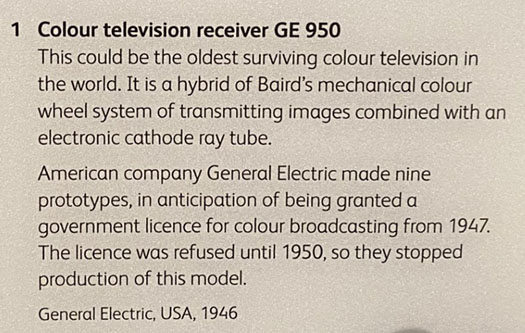
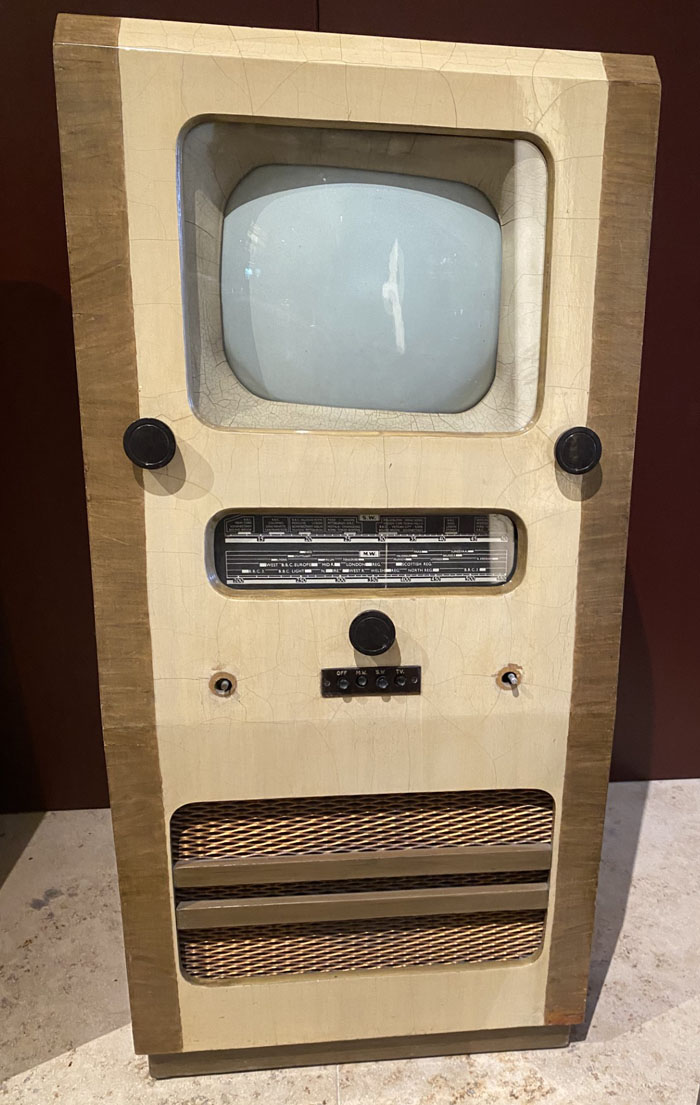

Other Connections
- Edison's Telephone
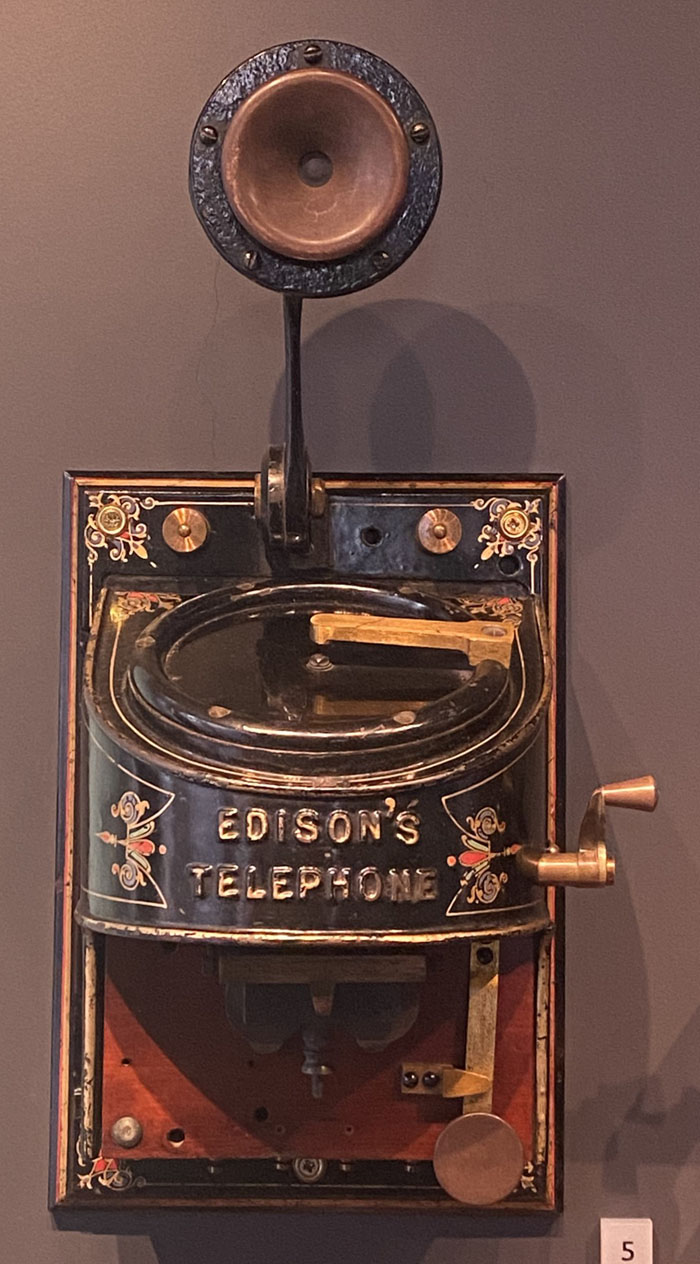



|